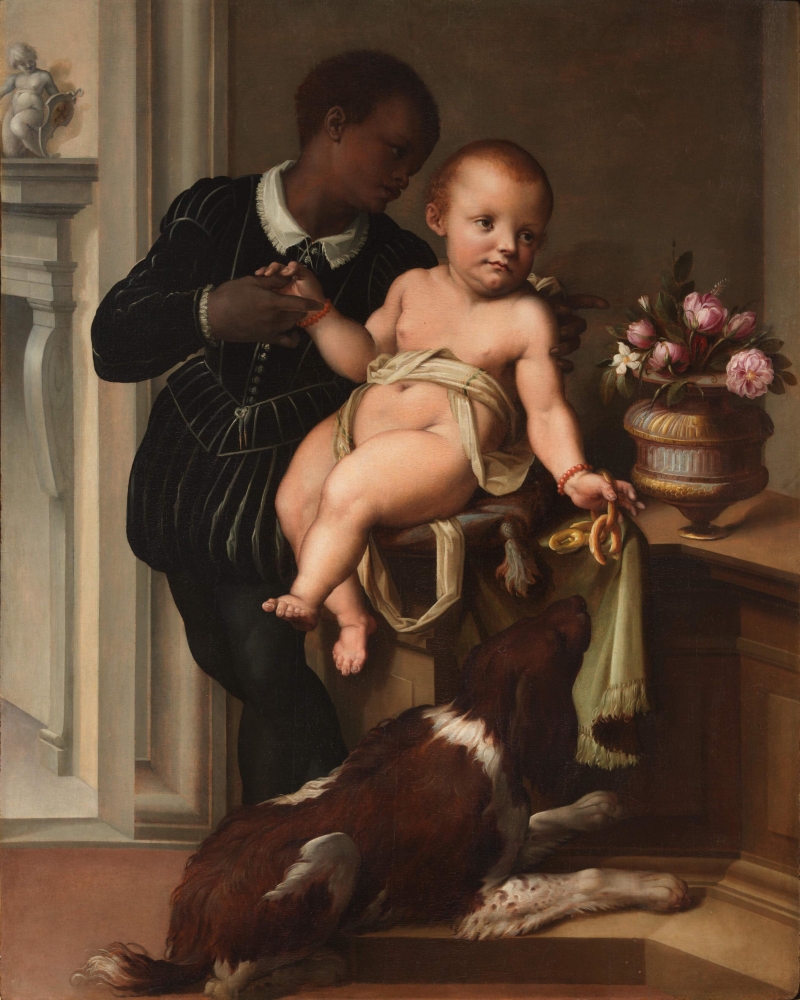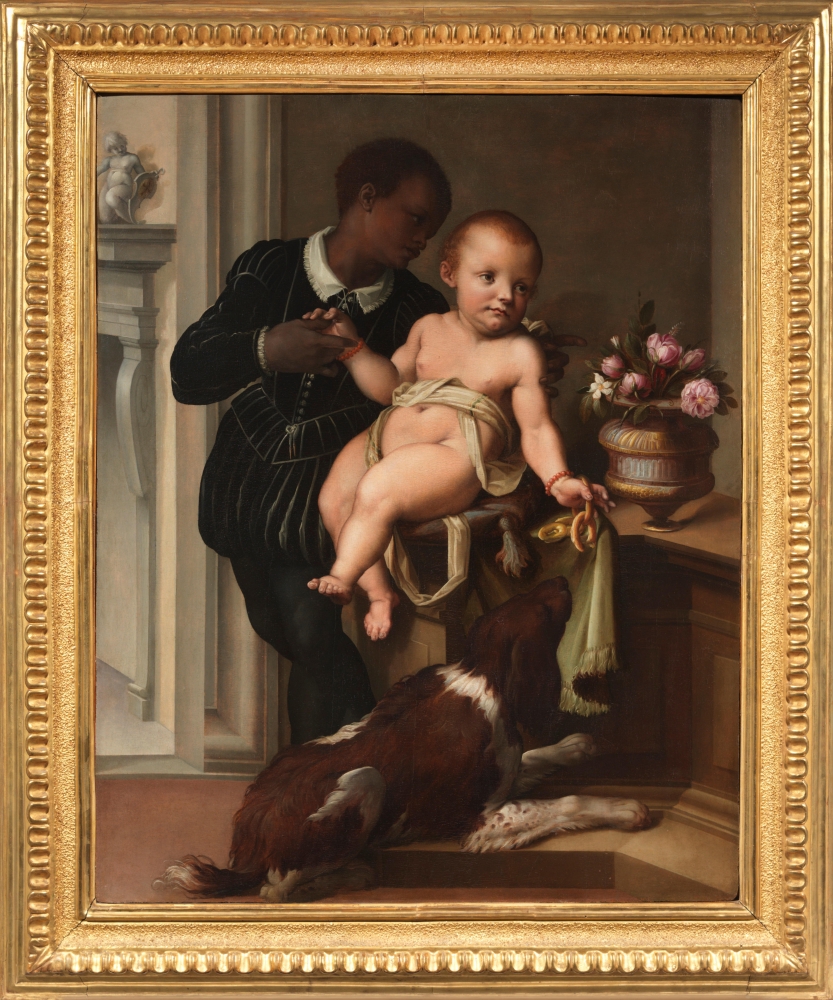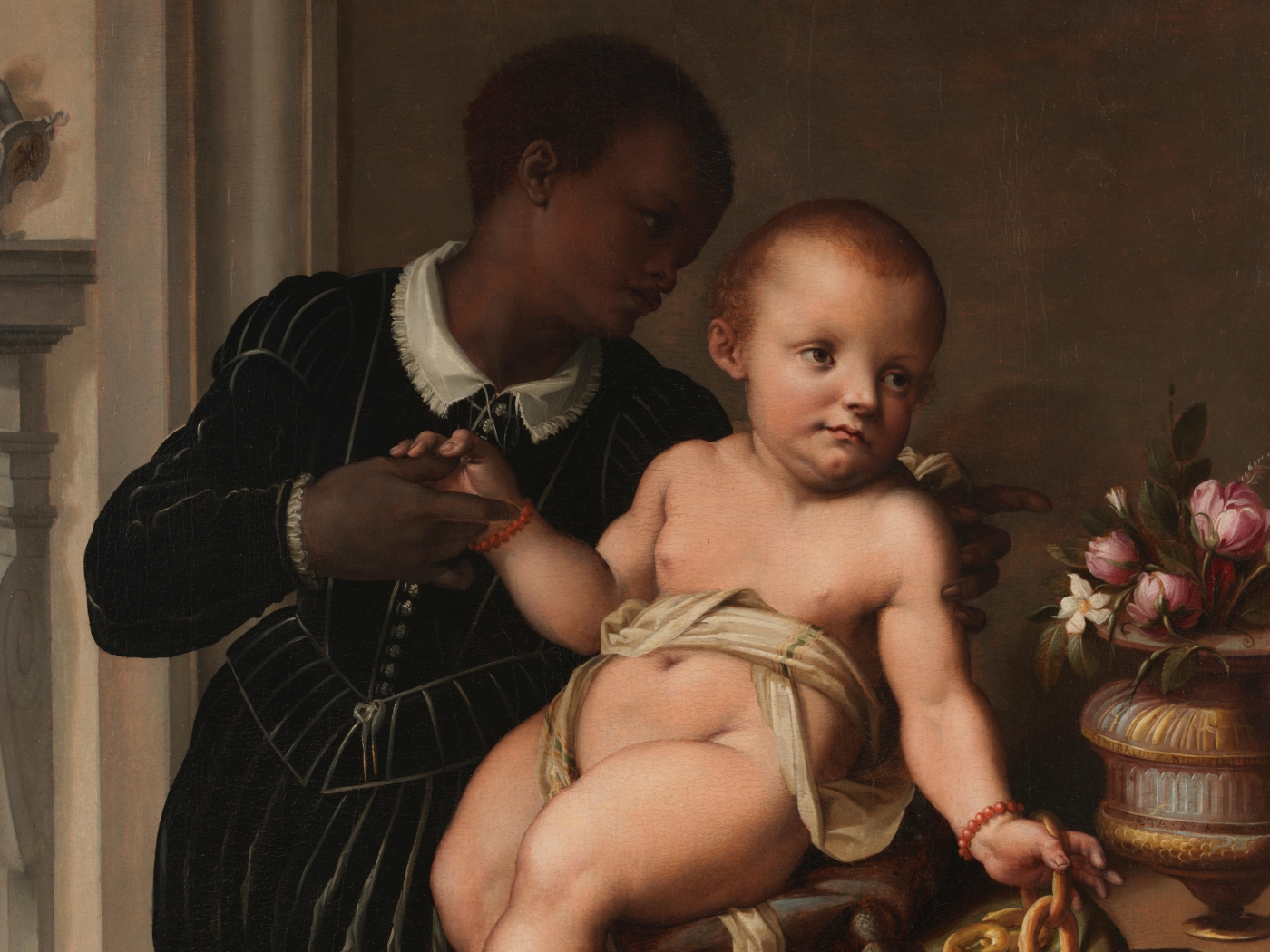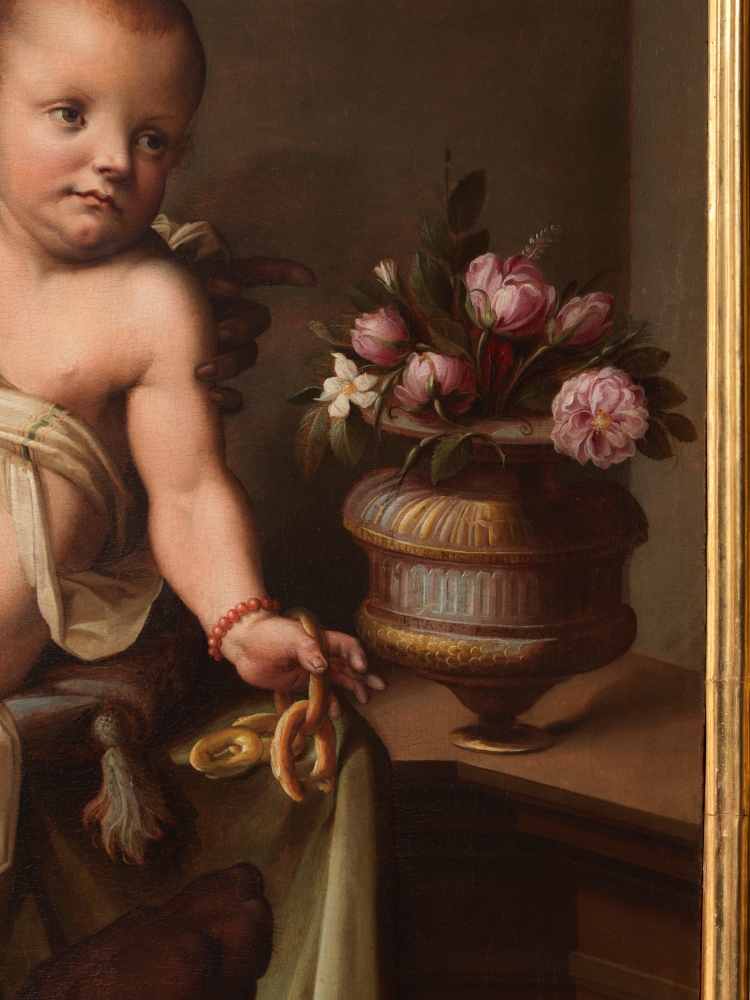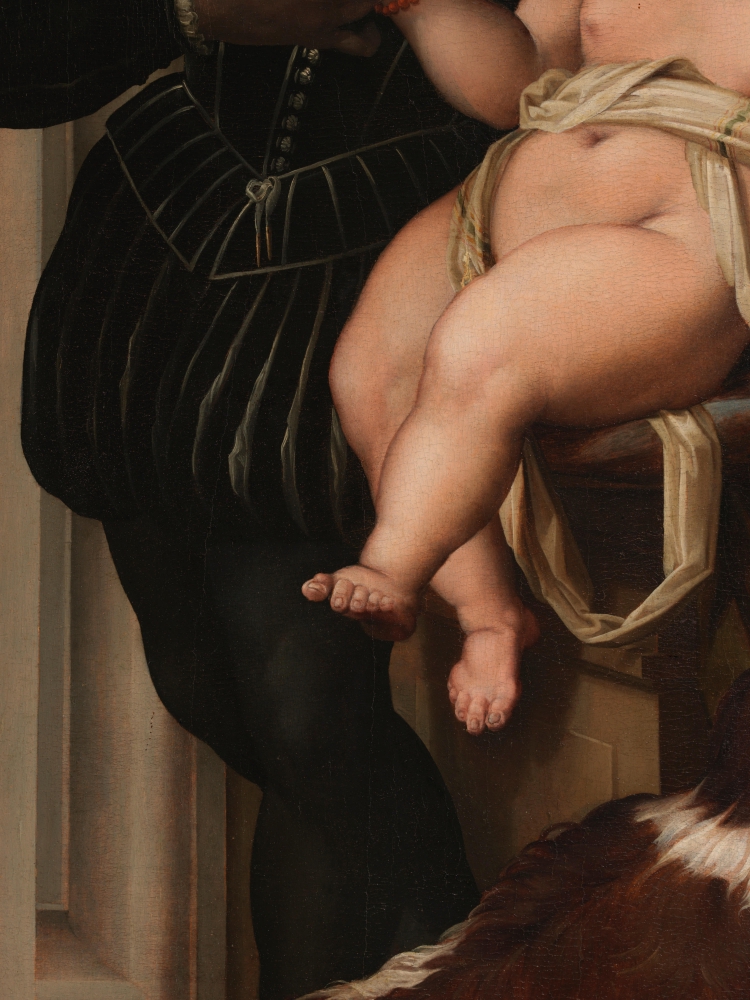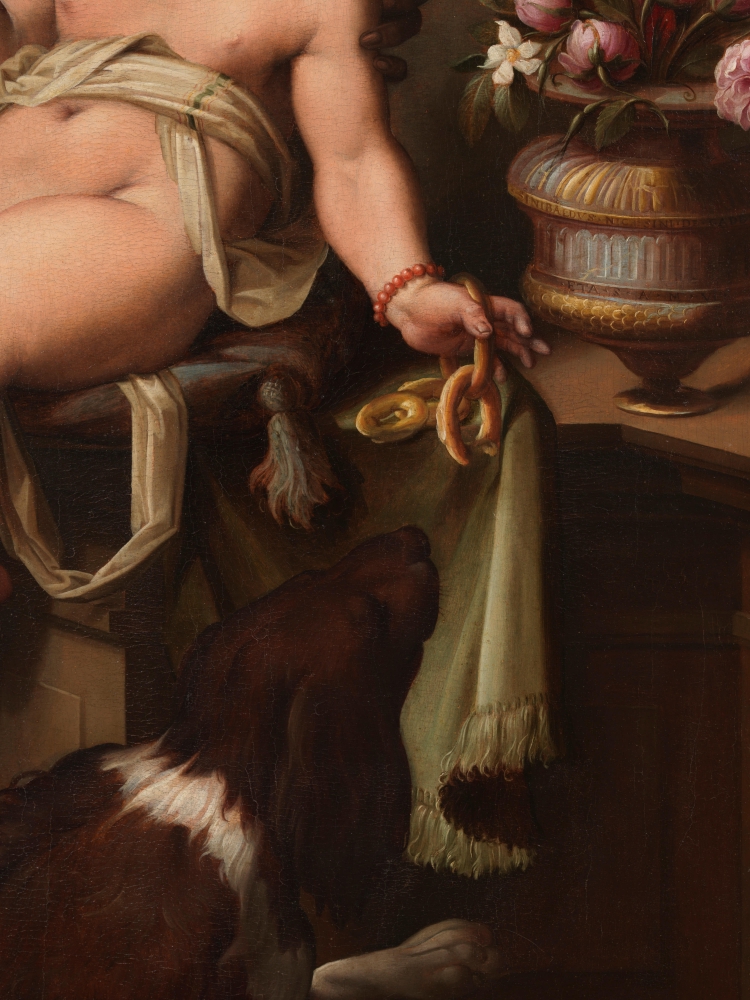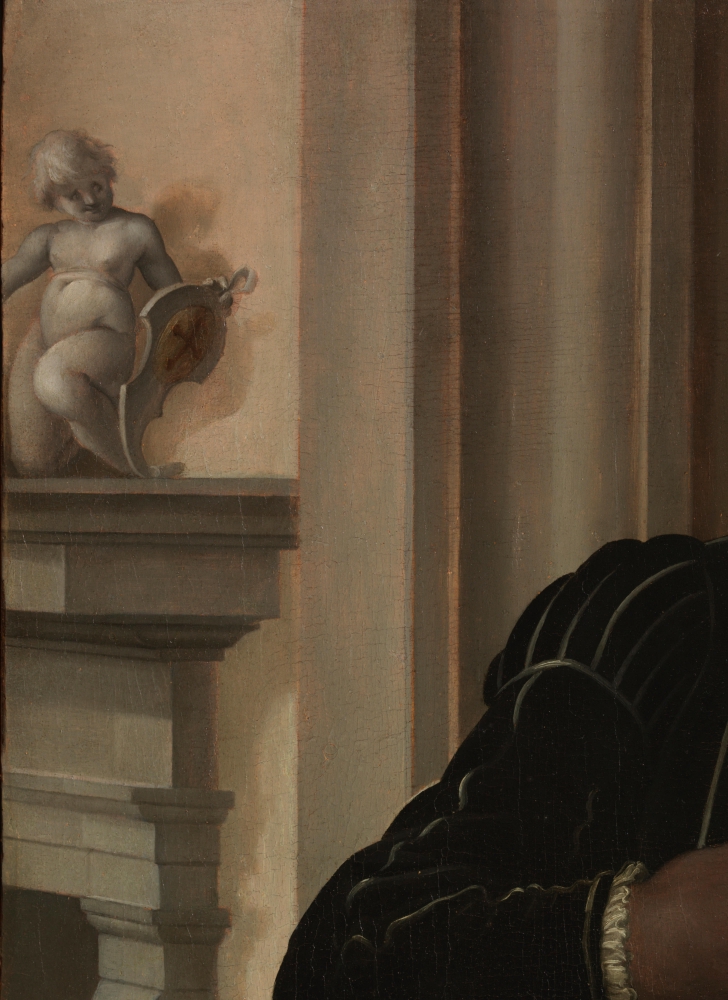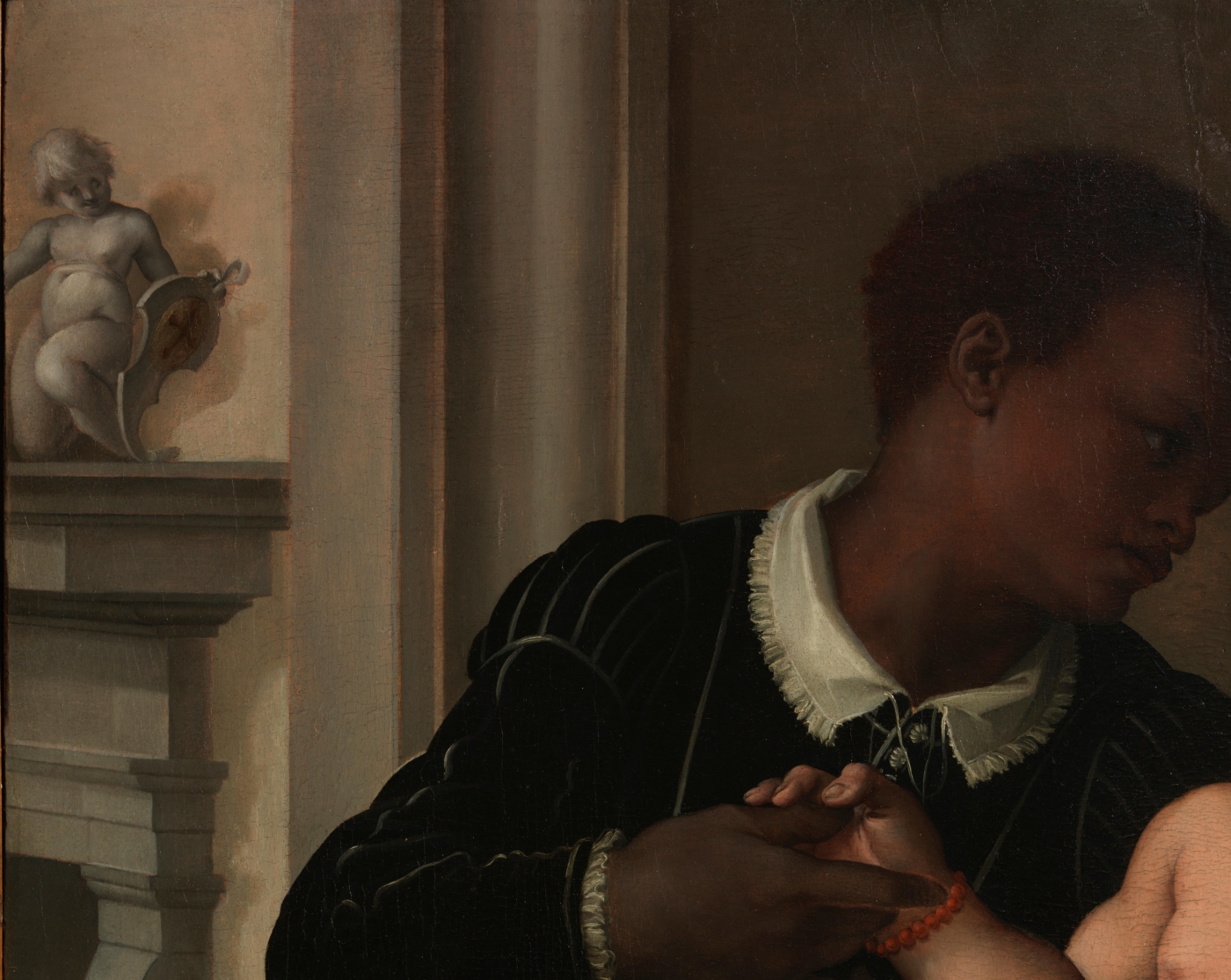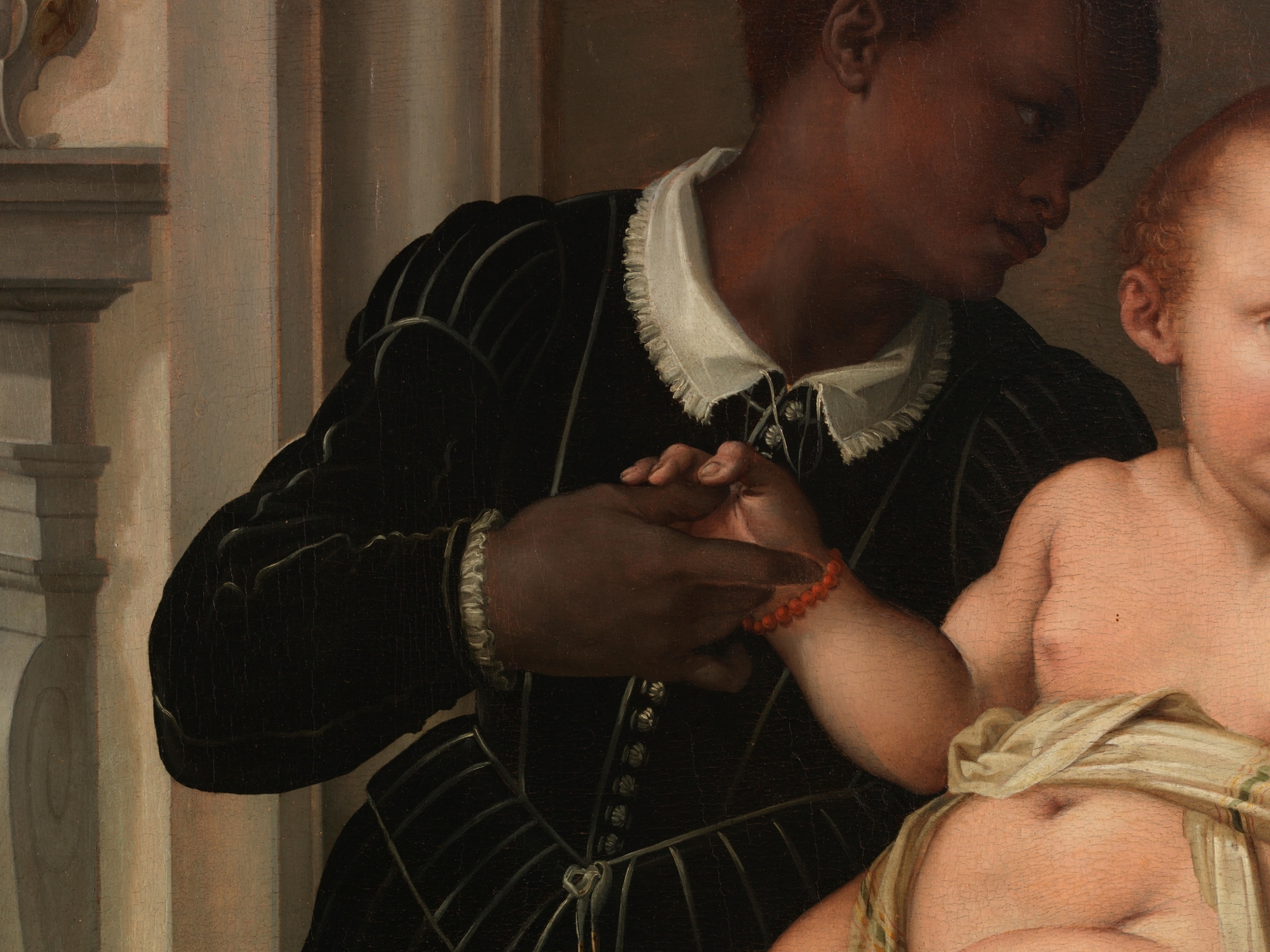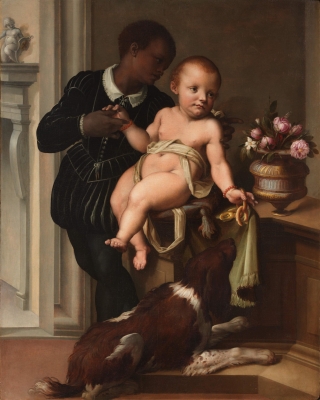Probably commissioned by Niccolo Gaddi (1537 – 1591), Florence;
Luigi Koelliker Collection, Milan, until approximately 15 years ago when acquired by a:
Private collection, Florence, from whom acquired by the present owner.
Florence, Palazzo Strozzi, Il Cinquecento a Firenze: “maniera moderna” e controriforma, 21 September 2017 – 21 January 2018.
L. Conigliello, ‘Jacopo Ligozzi tra turchi, fantolini e disegni di architetture’, Paragone, s. III, nos. 84-85, 2009, pp. 52-53, note 25 (as Jacopo Ligozzi);
A. Nesi, ‘Problemi di ritrattistica cinquecentesca: Maso da San Friano ed altri pittori a lui contemporanei’, Arte Cristiana, XCVIII, 2010, pp. 189-190, reproduced in black and white on p. 192, fig. 17;
A. Fenech Kroke, in Florence. Portraits à la cour des Médicis, exh. cat., (ed.) C. Falciani, Brussels 2015, pp. 173, 183, under cat. no. 37;
C. Acidini Luchinat, ‘Ritratto di Sinibaldo Gaddi’, in Il Cinquecento a Firenze: “maniera moderna” e controriforma, exh. cat., (eds.) C. Falciani & A. Natali, Florence 2017, p. 150, cat. no. IV.2, reproduced in colour on p. 151.
Click here to download the factsheet
The following note is based on an extract from the Il Cinquecento a Firenze exhibition catalogue (Florence, Palazzo Strozzi, 21 September 2017 – 21 January 2018, curated by Carlo Falciani and Antonio Natali), written by Cristina Acidini Luchinat.
Among the ‘child’ portraits of Florentine art – which should be considered an authentic ‘genre’ in its own right within the encompassing ‘genre’ of portraiture – there is no doubt that the case of the portraits of the Gaddi children is an unusual one. Present in paintings dating from the last years of the 16th century, they are poignant tokens of hope, of mourning and of remembrance. Lucrezia, Sinibaldo and Emilia, all of whom died at a tender age, were the offspring of cavaliere Niccolò Gaddi’s two marriages. Niccolò Gaddi was a gentleman descended from the line of Giottesque painters who held positions at the Medici court – senator, lieutenant of the Accademia del Disegno – and was especially close to Francesco I. Niccolò was Francesco’s companion and often acted as a guide as he pursued his passions and curiosities: in the collection of antiquities, works of art and natural rarities, in his precocious museography and the practice of proto-scientific experiments in the Casino Mediceo of San Marco. Works of art from his rich collections, dispersed in the 18th century, are still appearing on the art market.[i]
Three of the portraits of his descendants – all in private collections – were reunited for the exhibition Florence. Portraits à la cour des Médicis in Paris in 2015 – 2016; in that catalogue, Antonella Fenech Kroke attributed the paintings to Santi di Tito and dated them around 1564 – 1565.[ii] Lucrezia (who died in 1569, but was painted in 1577 according to Cristina De Benedictis)[iii] is depicted in the garden known as the Paradiso dei Gaddi with the palazzo in the background, with a yellow Macaw parrot and a gerbil (otherwise known as a desert rat), symbols of her father's access to exotic fauna or at least images of these species. Emilia, depicted in half-length, refills a vase full of flowers with water, perhaps an allusion to her father's knowledge of botany. In the pendant to the painting of Emilia, Sinibaldo brandishes a luxurious teething-ring, while his masculine gender is covertly displayed through a curtain-like opening in his swaddling bands.
The question of the Gaddi children named Sinibaldo, the ancestral name, is more complex than might at first appear. The documents suggest that two were born: one of a pair of twins (the other named Vincenzo), son of Niccolò and Emilia Ridolfi and baptised on the 7th October 1563; and another who was the son of Vincenzo, who was only twenty at the time, and baptised on the 26th May 1582.[iv] However, the question remains open, as no other trace of Vincenzo – who predeceased his father – survives. Mirabello Cavalori's portrait of Niccolò Gaddi's illegitimate daughter Settimia – who was later renamed Lucrezia in honour of the latter's mother, perhaps after the demise of his legitimate daughter Lucrezia (Corsi Collection, Museo Bardini, Florence) – contributes to the complexity of what we know of Gaddi's progeniture.
The present painting, once in the Koelliker Collection, Milan, is a portrait of the first Sinibaldo, born in 1563. The inscription on the vase of flowers tells us that he was six months old at the time; he was to die not long after reaching this age, on 31st March 1564.
The composition is of the greatest originality. In the same manner as the more restless of the ‘innocents’ in Della Robbia's medallions in the portico of the renowned Florentine ospedale, Sinibaldo has freed himself of his swaddling bands, which he has perhaps only just succeeded in unwinding, thus displaying his robust and firm body, now barely girded at the waist and the groin by the remains of the swaddling. The chubby face set in his round head presents, even in its childish features, resolved and recognisable physiological elements: full red lips, a dimpled chin, and sharp black eyes, which together with the red hair make manifest the resemblance to his father. A young Moorish page tries with difficulty to hold steady the wriggling and unstable infant Sinibaldo, who sets his eyes on what is occurring outside of the boundaries of the painting, and is sitting on the edge of a cabinet set on a platform, on top of a trimmed cloth and a cushion covered in cangiante silk. The tonal and chromatic contrasts between the two figures are of great refinement: the white and pink flesh of the naked infant is heightened by the contrast with the darker paint used to paint the Moor, on whose black velvet garment the snow-white cambric collar edged with lace stands out. Two small bracelets of auspicious coral are wrapped around the child's chubby wrists and introduce vivid touches of red to the composition. In addition, the black silhouette of the page, arching in its caring and vigilant gesture, stands out against the light-coloured architecture, which is almost certainly a view of Palazzo Gaddi between via del Giglio and via del Melarancio. The stone shield over the door frame (with the ‘staff’ (bastone), bent at an angle at its foot, as was customary in Florence), a portion of white-washed wall lit by the light of the sun, and then a chimney-piece in pietra serena on brackets (mensole inginocchiate), with a putto holding the Gaddi arms, outlined by the slight cast shadow.
The view – seen in strong perspective which endows the architectural elements with sharp, clean-cut profiles – suggests a meditation on Bronzino's Portrait of Bartolomeo Panciatichi.[v] In the foreground of this shaded environment, one observes a middle-sized, thick-coated white and tan dog, with long ears and a tufted tail which seems to belong to the Epagneul or Spaniel family, originating in Britany and valued since the 16th century for hunting. Crouching between the floor and the platform, the dog has his eyes fixed on the circular biscuits (ciambelline) so negligently hanging from Sinibaldo's hand. A bunch of spring flowers – roses, peonies, a narcissus and a sprig of white philadelphus – in a finely wrought metal vase with pod-shaped decoration (bacellato) completes the setting.[vi] Towards the bottom right, we see a winged insect.
This sui generis masterpiece captures and fixes – outside of time – an instant of fragile happiness. Only superficially a spontaneous composition, appearing to record a tranche de vie, it is in fact constructed to communicate very specific messages: the wealth of the family who owns an exotic page, the nobility of the father's interests, the social standing conferred by such a well-endowed home, and the proximity of a well-tended garden cultivated with both botanical knowledge and passion. From the painting, which is believed to be posthumous, emerges the desire to pass down to the descendants the image of a flourishing child full of vitality, cared for in the elegant and comfortable domestic environment, whose promising existence could only be interrupted by a fatal illness.
During the search for the author of the work, Jacopo Ligozzi's name has been proposed[vii] owing in part to the presence of the naturalistic components in the portraits, such as the animals in that of Lucrezia[viii] and the flowers present in Emilia's portrait. A well-aimed suggestion by Philippe Costamagna was then followed by further in-depth investigation by Alessandro Nesi in the direction of Maso da San Friano, a convincing attribution, when one makes a comparison to other works by this artist. These display affinities in terms of the composition, as well as in the handling of the paint, which is ‘suspended between a decisive plasticity, in the manner of Foschi, and the soft sfumato associated with Andrea del Sarto’.[ix]
In Zeri's photographic archive, there is a colour photograph of a painting (attributed to an unknown Florentine artist of the 16th century, whereabouts unknown) which is a partial copy of the painting presented here, as it is only the child who is depicted, with the taralli biscuits held in his left hand, and his right hand – rather than holding the hand of the page – clutches a rose, which alludes to the brevity of his tender years of existence. The inscription, in capital letters at the top of the painting, reads Sinibaldo S [econ)do [son] di Nic.o di Sinibaldo Gaddi, suggesting that this version was destined for the dynastic gallery of the Gaddi family, which was dispersed in the same way as the rest of the collection.
[i] C. Acidini Luchinat, ‘Niccolò Gaddi collezionista e dilettante del Cinquecento’, Paragone, nos. 359/361, 1980, pp. 141-175; C. Acidini Luchinat, ‘A Firenze per i Medici sulla cappella Gaddi nella chiesa di Santa Maria Novella’, in Giovan Antonio Dosio da San Gimignano architetto e scultor fiorentino tra Roma, Firenze e Napoli, (ed.) E. Barletti, Florence 2011, pp. 327-343.
[ii] A. Fenech Kroke, in Florence. Portraits à la cour des Médicis, exh. cat., (ed.) C. Falciani, Brussels 2015, pp. 178-183, nos. 35-37.
[iii] C. De Benedictis, ‘Devozione-collezione: sulla committenza fiorentina nell’età della Controriforma’, in Altari e committenza: episodi a Firenze nell'età della controriforma, Florence 1996, pp. 11-12, fig. 1.
[iv] L. Conigliello, ‘Jacopo Ligozzi tra turchi, fantolini e disegni di architetture’, Paragone, s. III, nos. 84/85, 2009, pp. 52-53, note 25; A. Nesi, ‘Problemi di ritrattistica cinquecentesca: Maso da San Friano ed altri pittori a lui contemporanei’, Arte Cristiana, XCVIII, 2010, pp. 189.
[v] 1540, Uffizi, inv. 1890 n. 741.
[vi] Nesi 2010, p. 190.
[vii] Conigliello 2009, pp. 52-53, note 25, with a date of the late 1580s.
[viii] Also present in Ligozzi's painted panels GDSU, inv. nos. 1959 Orn. 1997 Orn, as observed by De Benedictis.
[ix] ‘…sospesa fra plasticismi decisi, alla Foschi, e morbido sfumato sartesco.’ Nesi 2010, p. 190.
